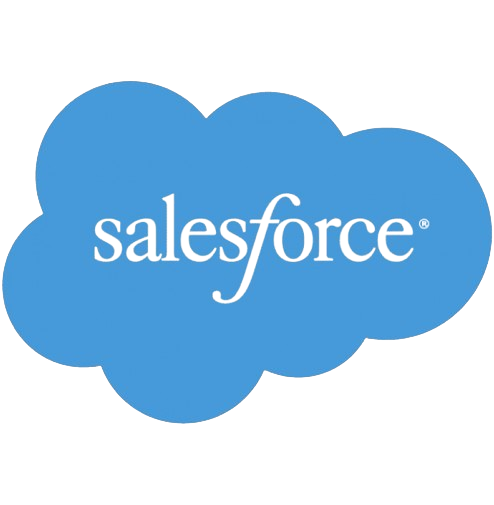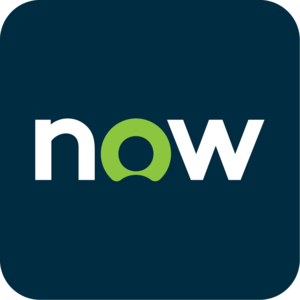Salesforce Patient 360: Benefits and Features
Updated on December 21, 2025
Data is the most valuable asset in any digital transformation and the most frequent point of failure. Healthcare isn’t just about treating symptoms anymore, it’s more about understanding the person behind the patient ID. Healthcare business leaders are now rebuilding their digital foundation from disjointed systems to unified platforms.
According to the latest analysis by European Journal of Biomedical and Scientific Research, healthcare organizations implementing comprehensive data integration across systems achieved 26.5% reduction in 30-day hospital re-admissions for congestive heart failure patients. This integration enhanced overall patient management through effective care coordination and proactive interventions.
Do you ever wonder why your patient engagement feels disconnected or why your strategy isn’t driving outcomes? You’re not alone.
There’s a smart way to fix it.
Below, we’re going to cover how Salesforce Patient 360 is transforming healthcare delivery from data centralization and predictive personalization to enterprise level scalability and privacy.
Let’s have a full look at its features and benefits for real-world impact.
What Is a Salesforce Patient 360?
Salesforce Patient 360 is a healthcare data integration platform within Salesforce Health Cloud that provides healthcare organizations with a 360-degree view of each patient’s health journey. It covers clinical, administrative, and behavioral aspects.
This is a dynamic and AI-powered system that connects data from EHRs, claims, pharmacy systems, wearable devices, and even social determinants of health (SDoH) into a unified and actionable profile.
Patient 360 makes care teams capable of delivering hyper-personalized care by automating workflows like prior authorizations, close care gaps, and improve outcomes at scale.
Why Salesforce Patient 360 Aligns with Modern Healthcare Strategy
Patients want personalized care and faster responses. Providers want better insights and tools that work together. Patient 360 is designed for exactly this moment, providing you with smarter decisions, stronger outcomes, and a more connected experience.
Benefits of Patient 360 for Patients
Before moving to core features and enhancements, let’s have a look at the benefits of patient 360 for patients and healthcare organizations.
Personalized Care
Patients get personalized care based on a complete view of their health history, needs, and preferences.
A Better Experience
Mobile access, self-service tools, and faster support in Patient 360 make healthcare more responsive and connected to patients.
Lower Costs
It helps patients with cost reduction by avoiding unnecessary tests, emergency visits, and duplicate procedures, ensuring better care coordination.
Proactive Wellness Support
It provides health tips, timely health reminders, and educational content for patients based on their unique data profile.
Benefits of Patient 360 for Healthcare Providers
Patient 360 is a strategic advantage for healthcare organizations.
Clinical Outcomes
Complete patient history and real-time health data reduces clinical blind spots. This precision enables earlier detection and accurate diagnoses. It results in reduced medical errors and variation in care.
Smarter and Evidence-Based Decisions
Patient 360 eliminates information gaps which lead to delayed or conservative care. It helps healthcare providers to make quick and confident decisions aligned with established healthcare best practices.
Operations That Save Time
It automates repetitive tasks, reduces manual administrative work, and frees up your staff to spend more time on patient care instead of paperwork.
Better Care Coordination
Everyone, from healthcare specialists to support staff, works from the same patient view, which improves collaboration across departments.
Cost Savings
Faster processes, fewer errors, and optimized resource usage help reduce operational costs across the departments.
Core Features of Patient 360
Let’s break down the core features and latest enhancements in Patient 360 which enable holistic patient engagement for better efficiency.
Unified Patient Profile
Manage all your patient data including clinical records, claims, genomics, and pharmacy in a single, complete profile.
24/7 Data Access
It provides your patients and care teams with a 24/7 data access through mobile apps, web portals, and APIs. It’s the backbone of any digital front door strategy where patients can manage their entire journey.
AI-Powered Insights
Generative AI and predictive analytics help identify care gaps and recommend personalized interventions before issues escalate.
Interoperability (HL7, FHIR)
Salesforce Patient 360 integrates with and fully supports industry standards like HL7 v2, FHIR R4, and third-party systems that use prebuilt connectors and APIs.
Role-Based Dashboards
Clinicians, caregivers, and patients get a customized view of the patient’s record. Each role sees the most relevant data for their specific job.
For example:
- Administrative users can see sections like claims, authorizations, and admissions.
- Case managers have access to case management data and conversations.
- Care providers have a dashboard which provides clinical data and lab results.
Latest Enhancements in Salesforce Patient 360
Beyond core features, let’s uncover the latest enhancements in Patient 360.
Behavioral Health Tools
These include PHQ-9 scoring (used to plan and monitor treatment), crisis workflows, interactive healthcare timelines to support mental health care, and early intervention. These tools provide a unified view of patient health by integrating mental and behavioral health data.
Advanced Therapy Management
It tracks complex treatments such as cell and gene therapies from referral to administration. This tracking feature reduces the risk of costly errors and treatment delays which are exceptionally high in the field of cell and gene therapies.
Salesforce Genie Integration
This feature connects clinical, non-clinical, lifestyle, and environmental data which powers segmentation, personalization, and smarter patient engagement.
Slack for Care Teams
It provides a secure space for collaboration across all departments, featuring instant alerts and shared workflows that speed up patient case resolution.
MuleSoft Accelerator
It helps healthcare organizations to create a single view of patients by integrating data from different systems such as electronic health records (EHRs), lab results, billing, and scheduling systems with pre-built assets into a single platform like Salesforce Health Cloud.
Digital Commerce and Subscriptions
This feature extends Patient 360 by giving life sciences companies an edge to offer products and services directly to patients through a secure marketplace. Patients can manage subscriptions, update preferences, and access support in one place.
Patient 360: Challenges to Consider
Data Fragmentation
It’s hard to build a complete patient view without proper integration. Many healthcare organizations still rely on legacy systems that don’t easily connect with modern platforms.
Privacy Compliance
Secure data handling and transparent consent processes are non-negotiable. Patient 360 strategies must be designed with strict adherence to privacy laws such as HIPAA, GDPR as well as emerging regulations around AI and data usage.
Change Management
Even the best technology won’t succeed without people behind it. Implementing Patient 360 requires staff training and clear communication for its adoption, which can be slow without strong leadership support.
Is Patient 360 Scalable and Customizable?
Yes. Patient 360 is built on the Salesforce Health Cloud which supports modular architecture and API-first design. Whether you’re a clinic or a national healthcare network, you can scale. You can customize dashboards, alerts based on roles, specialties, and patient segments.
Is It User Friendly?
The Patient 360 interface is designed for speed and clarity. Patients can book appointments, access records, and manage prescriptions via:
- Mobile Apps
- Web Portals
- Secure SMS/Text Messages
- Email Communications
- Patient Community/Experience Cloud Sites
- Telehealth/Video Consultation Platforms
How Patient 360 Protects Patient Data?
Patient privacy is the top priority in healthcare technology. Patient 360 uses Salesforce Shield for encryption and compliance, which includes:
- Full spectrum data protection
- Role-based access permissions
- Audit and compliance dashboards
- AI threat detection through integrated tools
Get More from Patient 360 with CCI
Cloud Consulting Inc. brings technical expertise in implementing Salesforce Patient 360 which includes configuration and integration. As a Salesforce Gold partner, CCI helps healthcare providers design, deploy and optimize Patient 360 solutions for their unique workflows, data sources and healthcare models.
To learn how Patient 360 can transform your organization’s care delivery, get in touch with our team.
FAQs
How is Patient 360 different from a traditional EMR?
Patient 360 provides a holistic, integrated view of a patient from various sources and systems including EMR for better care coordination, health management and reporting. EMR (Electronic Medical Record) stores patients’ medical data including diagnoses and medications from a single source within one practice.
Can small clinics use Patient 360?
Yes. It’s scalable with pricing tiers suited for different sizes of organizations.
Does it support multilingual interfaces?
Yes, Patient 360 supports multilingual interfaces for patient portals and dashboards.
Can Salesforce be used as an EHR?
Salesforce is not standard EHR software. It serves as a powerful patient engagement and data management platform. It’s built to be customized and connected to your existing clinical systems to give a complete, unified view of health-related information.





